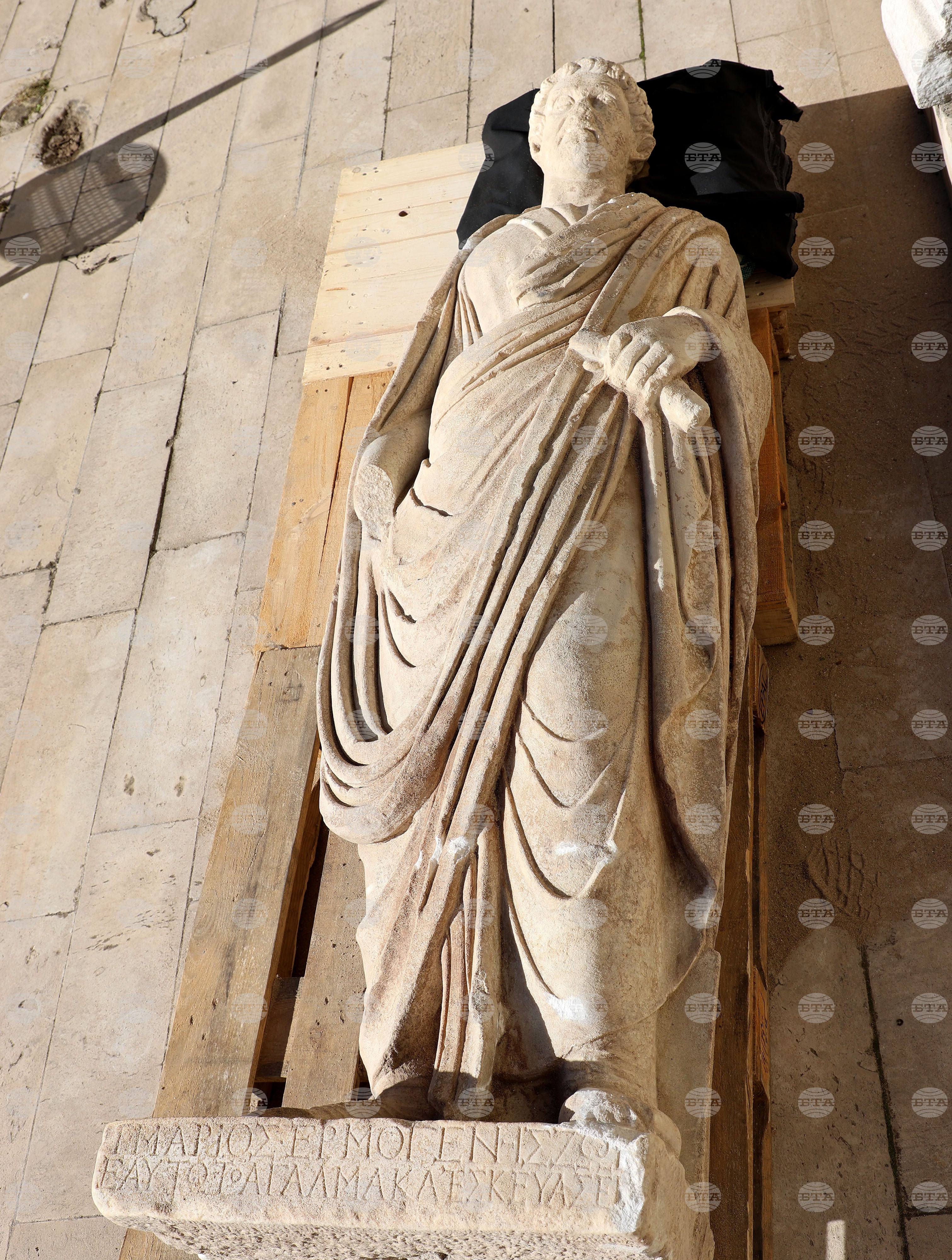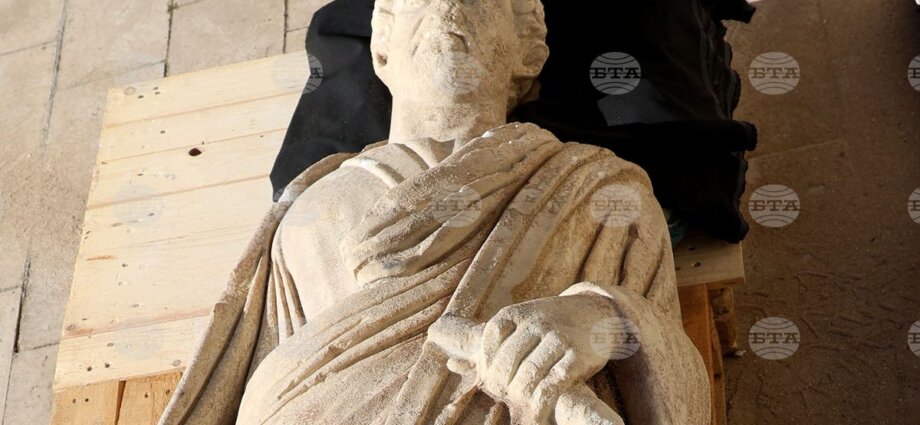Archaeologists in Bulgaria have identified an “exceptionally well-preserved” marble statue of a Roman man that was uncovered during construction in the city of Varna, once known as the ancient Greek city of Odessos.
Workers found the marble man outside the fortress walls of Odessos in an area filled with alluvium, which is a combination of sand, clay, silt, and gravel that’s left behind by streams. A small river used to flow in the area.
The statue, which Bulgarian news agency BTA reported was likely created in the late second or early third century AD, is of a citizen of Odessos, according to the Varna Regional Museum of History.
“The construction entrepreneur Georgi Kraychev informed [us] about it in a timely manner,” the museum wrote in a Facebook post, sharing additional photos of the statue.
The museum said the sculpture is slightly larger than human height, and made of fine white marble. The only damage to the “unique” Roman-era statue was to the middle-aged man’s right wrist and face.
Wearing a Roman toga and holding a scroll, the bearded man was also identified on the statue itself as Gaius Marios Ermogeniesz. The name was inscribed on the pedestal below his feet.
The museum said the man’s clothing indicated that Gaius was in good standing with the Romans.
Dr. Vasil Tenekedjiev, who works at the museum, told BTA that it’s possible enemies of the public figure may have taken his sculpture to that location.
Varna is Bulgaria’s biggest maritime city, according to the Free Speech International Foundation. It first began as a Greek colony in 570 BC.

The foundation said it was a major port in the Roman province of Moesia that prospered in the second and third centuries.
Roman Emperor Theodosius II signed an armistice with Attila the Hun in Odessos in 447.
But, in the seventh century, attacks from Avars and Slavs resulted in the abandoning of the city for several decades before it was renamed Varna.
“In the present-day Greek Neighbourhood, situated over the oldest core of the city, there are the ruins of a building which still impresses, 1,700 years after it was abandoned,” the foundation noted.











